The integration with Apple Messages for Business allows you to receive and reply to messages sent from your customers via the Messages app on Apple devices. It comes with handy features to help you provide a better customer experience.
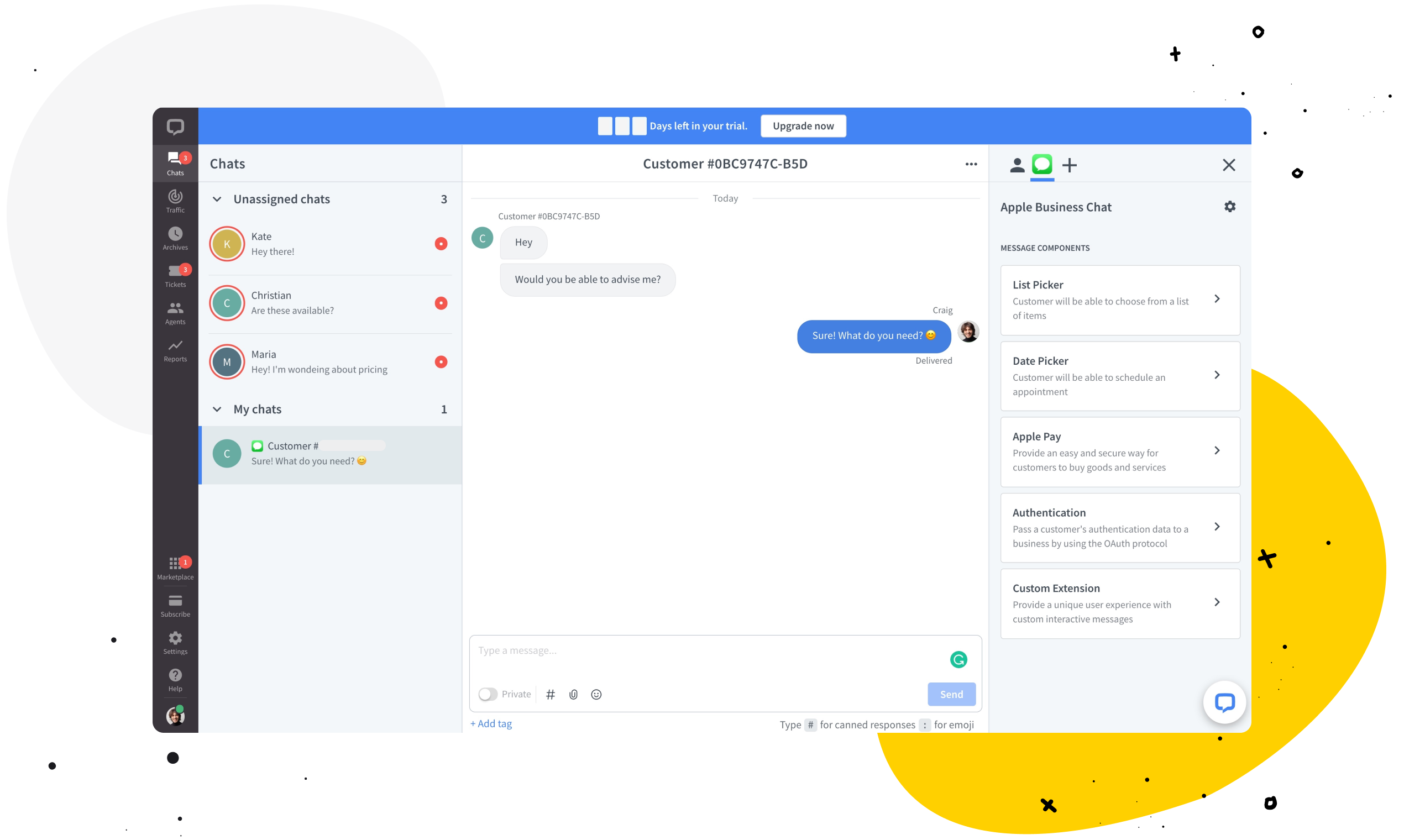
Not sure how to set up Apple Messages for Business? See the steps in this article.
How the integration works
Once the integration is implemented, your customers can send you messages. Customers messaging you via Apple Messages for Business will appear in the Chats list with the integration logo, and will automatically be named according to the following format: Customer #<12 LiveChat CustomerID characters>.

The Apple Messages for Business messages will appear in the Chats tab, just like all chats do. You will find them in the Unassigned chats section on the chats list. To reply to a message, select the chat from the list and click on Assign to me. Then you can send a message as usual.
Unassigned messages stay on the Chat list until they are assigned to an agent and closed. So you can answer whenever it is convenient.
You can also use a few extra features that make for an even better chatting experience.
In order to use those features, select a chat coming from Apple Messages for Business integration and open the integration app from the details section on the right.
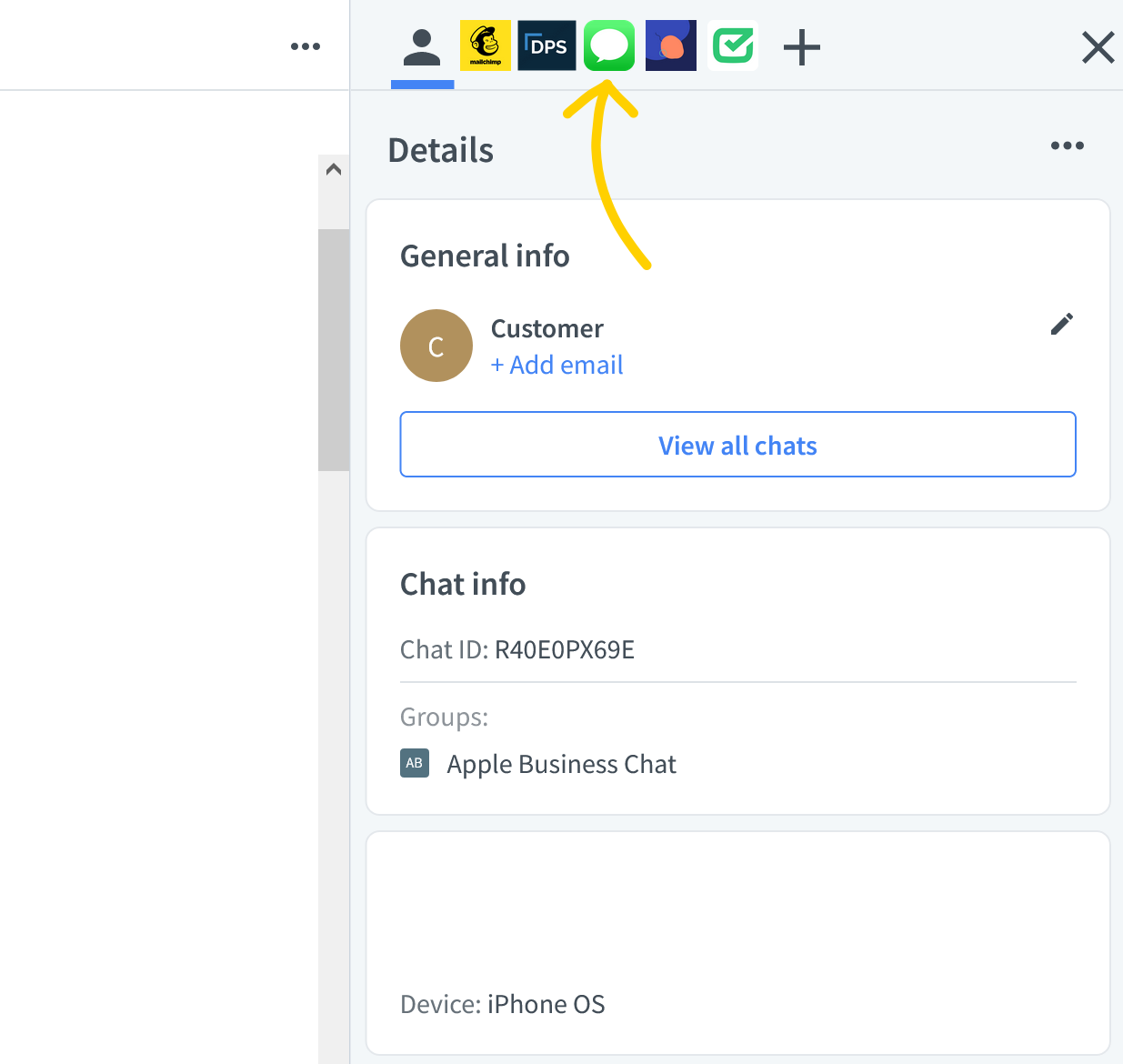
The integration app consists of 5 tabs, one for every message component or feature available, and a settings button. A message component is a rich message that you can send over chat. The Settings button is the gear icon in the upper right corner.
List picker
You can create a list of items, for example, a few similar products that might interest the customer.
To send a list:
1) Go to a chat and open the Apple Messages for Business app from the details bar on the right.
2) Select and click on the List picker tile.
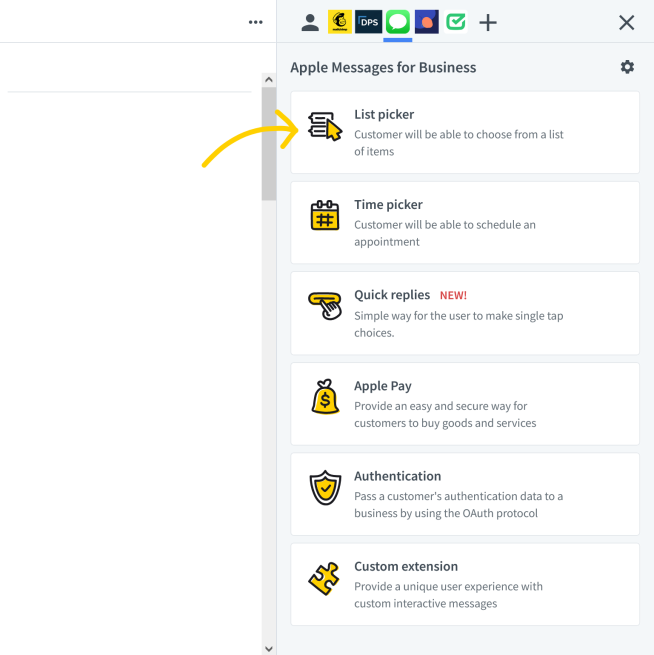
3)Click on the New button in the upper right corner.
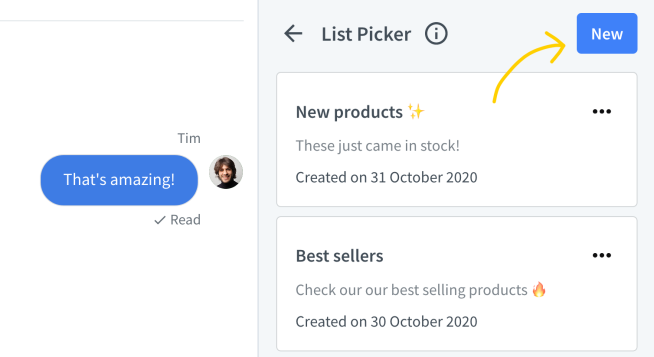
4) Fill out all relevant fields and click Send. You can also choose to Save as template and have it ready to send when you need it.
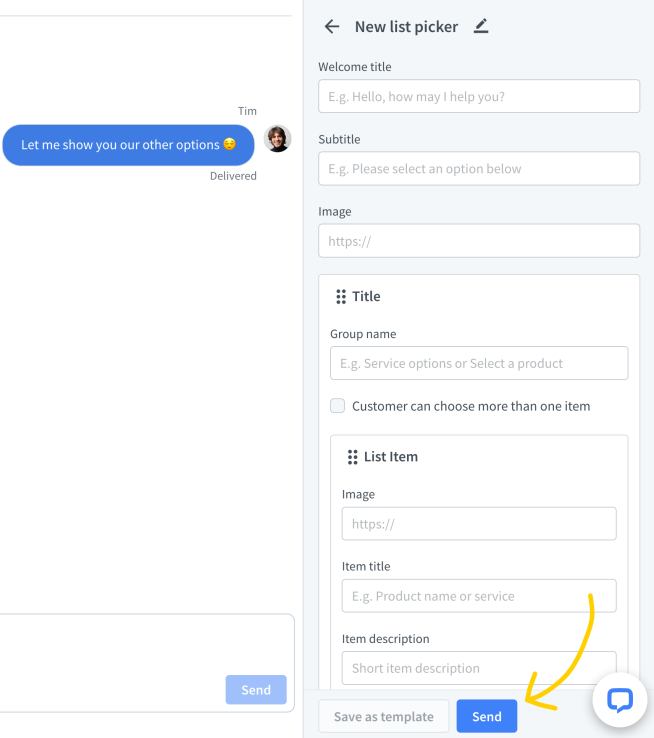
To save, duplicate or use saved templates, simply:
1) Go to a chat and open the Apple Messages for Business app from the details bar on the right.
2) Select and click on the List picker tile.
3) Click on the three dots on the list picker of your choice.
4) Choose the action you want to perform.
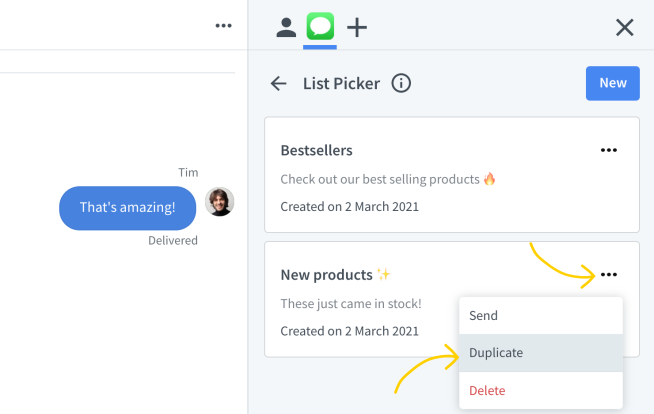
Time picker
Propose time and date options for a meeting and let customers reserve one in chat. They will be able to see any potential conflict thanks to an automatic cross-check with the Calendar app on their iPhone.
To create a time picker:
1) Go to a chat and open the Apple Messages for Business app from the details bar on the right.
2) Select and click on the Time picker tile.
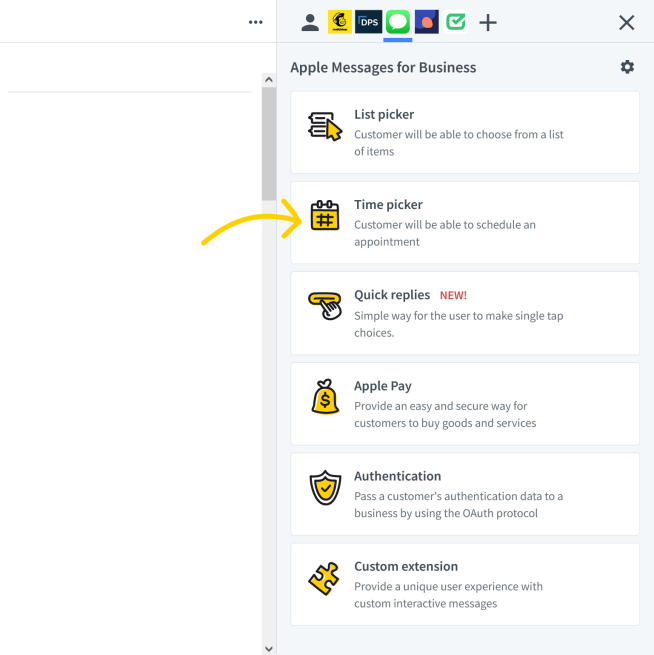
3) Fill out all relevant fields and click Send. Or Save as template and have it ready to send when you need it.
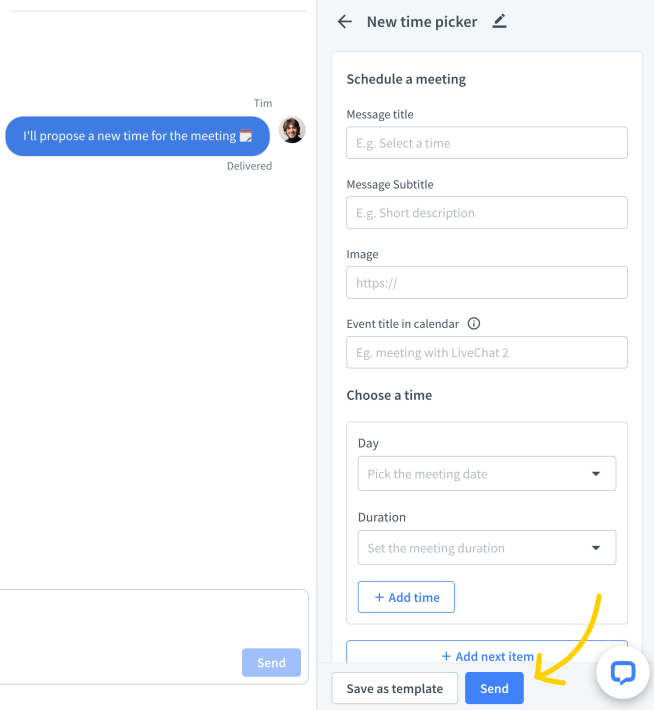
To send, duplicate or delete a template:
1) Go to a chat and open the Apple Messages for Business app from the details bar on the right.
2) Select and click on the Time picker tile.
3) Click on the three dots on the time picker of your choice.
4) Choose the action you want to perform.
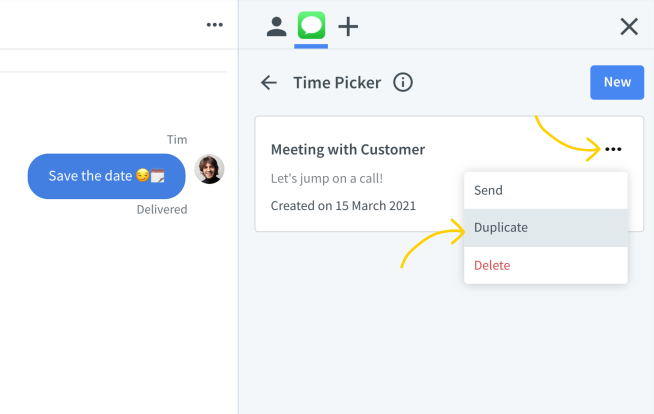
There are a few additional features, that need work on the developer side and can’t be used out of the box. You can read more about them in the developer docs: Apple Pay, Authenticationtion, and Custom extension.
Quick replies
Present a range of choices with a single tap during an ongoing conversation. You can have between two and five customizable answers for your visitors to choose from.
To create a quick reply:
1) Go to a chat and open the Apple Messages for Business app from the details bar on the right.
2) Select and click on the Quick replies tile.
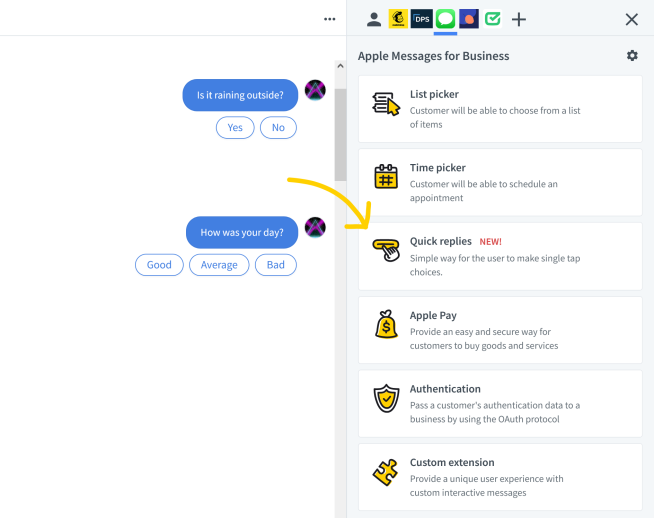
3) Fill out all relevant fields and click Send. Or Save as template and have it ready to send when you need it.
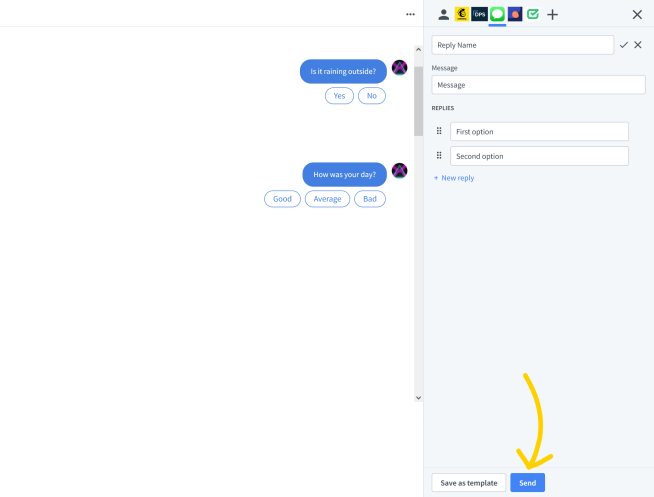
To send, duplicate or delete a template:
1) Go to a chat and open the Apple Messages for Business app from the details bar on the right.
2) Select and click on the Quick replies tile.
3) Click on the three dots on the quick reply of your choice.
4) Choose the action you want to perform.
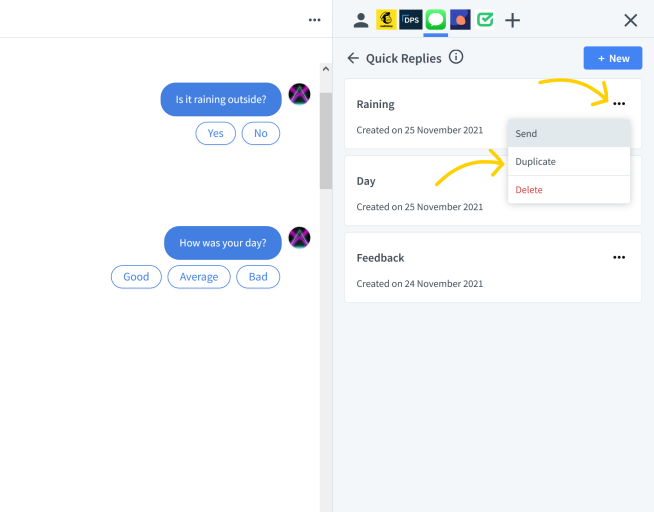
Settings
In the Settings tab, you can route chats to specific groups and set up a fallback Rich Link title and image.
Rich Link image fallback
The fallback image comes in handy when there is no original preview image for a given website, when the image is not available, or there are problems with passing the preview image. To learn more about why it’s important, head over here.
To set up the fallback image:
1) Go to a chat and open the Apple Messages for Business app from the details bar on the right.
2) Click on the Settings icon and scroll down to Fallback for rich link image.
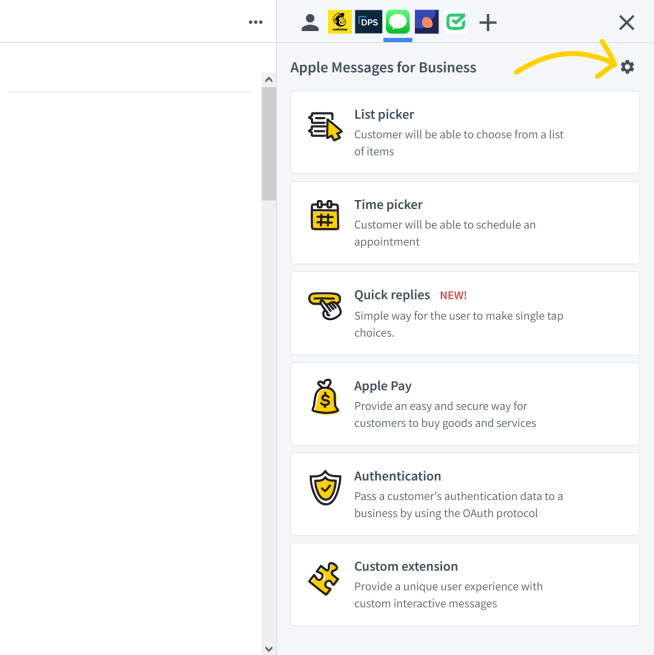
3) Fill out the relevant fields and click Save.
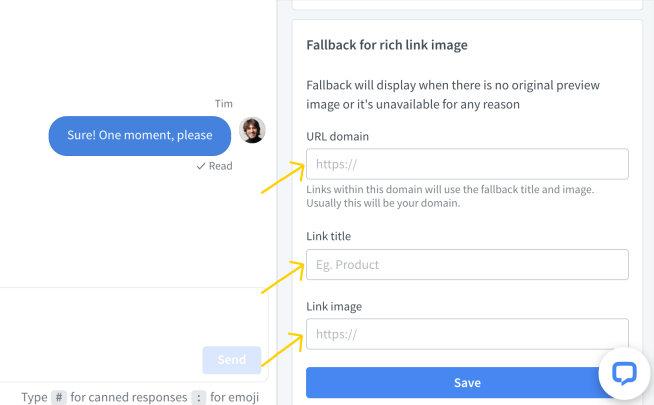
Rich messages
If you’re using an integration with ChatBot or the Rich Messages integration, you can send Quick Replies, Cards and Carousels in the Apple Messages for Business, and they will be displayed as List Pickers.
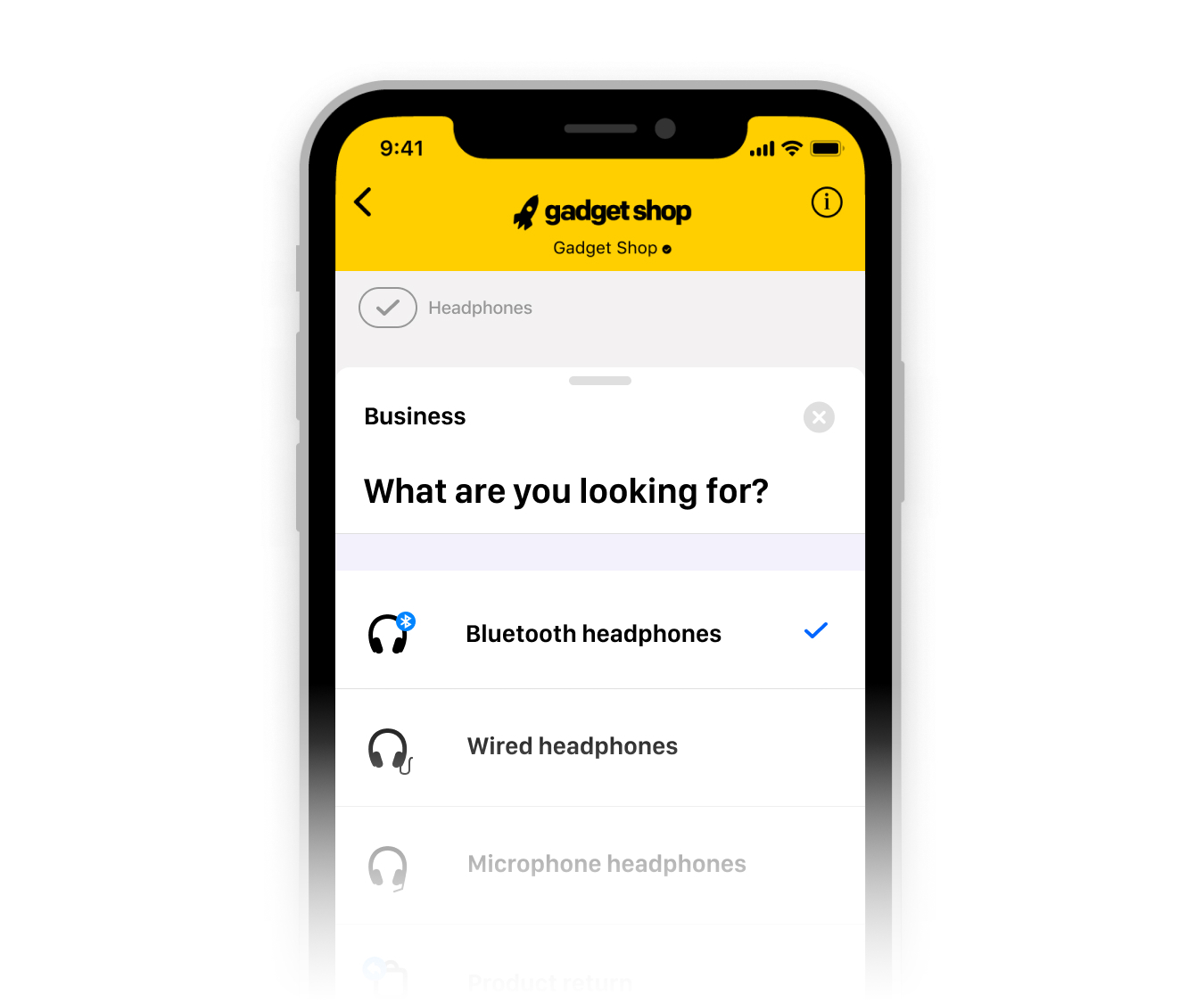
The integration supports rich messages, however, it does not support multiple types of buttons within one message. If you’re using ChatBot, make sure that each rich message contains only one type of button, e.g. only quick replies, only URLs, etc.
Routing chats to groups
There are two basic routing configurations for integrating LiveChat with Apple Messages for Business. You can route all such chats to one group in LiveChat, or you can direct them with different Groups/Intents in Apple Messages for Business to different groups in LiveChat.
Routings all chats to one group
To direct all your Apple Messages to a specific group in LiveChat, use the Basic routing setting. To do that:
1) Go to a chat and open the Apple Messages for Business app from the details bar on the right.
2) Click on the gear icon to open Settings.

3) Pick the Basic option.
4) Choose the desired group from the dropdown list and click Save
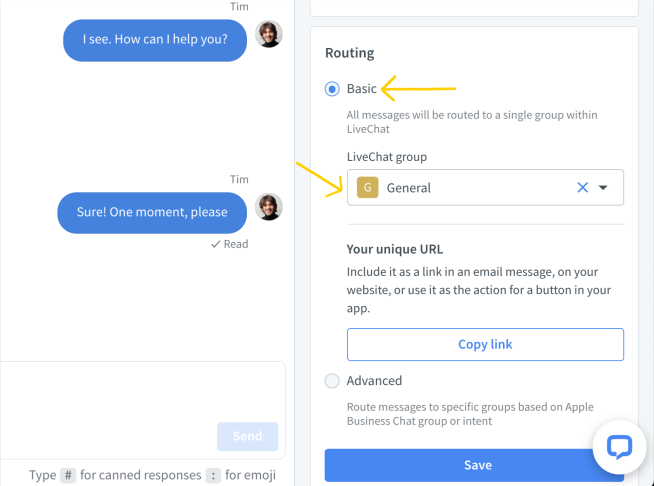
Routing chats to specific groups
Use Advanced routing to set any number of rules for each Group or Intent in the Apple Messages for Business. Each such rule can direct the chats to a different group in LiveChat. See this article for information on how to set up groups in LiveChat. Once your LiveChat groups are set up follow the steps below.
1) Go to a chat and open the Apple Messages for Business app from the details bar on the right.
2) Click on the gear icon to open Settings.

3) Pick the Advanced option.
4) Click on Add next route to set up more rules or fill out the relevant fields and click Save.
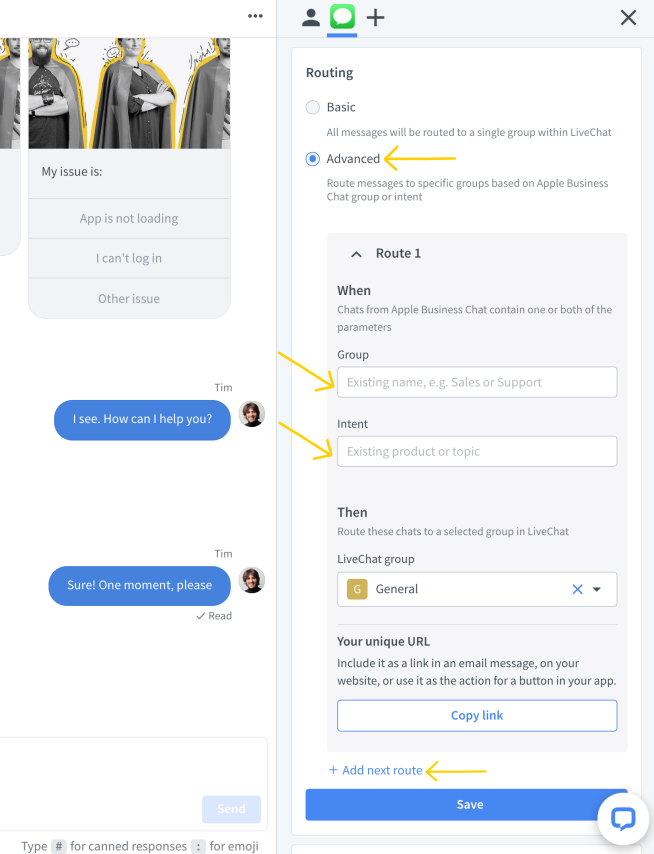
This way all chats started on a given page can be directed to your Sales team, and chats started on other pages to the Support team, for example. More information about Apple Groups and Intents can be found here.
For now, the integration allows only one Messages for Business account to be connected to one LiveChat license. We are working on a solution that will allow you to connect multiple Messages for Business accounts to one license.
Security
Using LiveChat together with Apple Messages for Business is safe and secure. There are no additional considerations when it comes to using Apple Messages for Business as an additional channel alongside the website widget.
Both the connections between an Apple user and Apple Messages for Business, and between Apple Messages for Business and LiveChat, are secured using sophisticated encryption methods and don’t use any propriety services underneath.
The integration that routes messages from Apple Messages for Business to LiveChat (and the other way around) is hosted within the same, thoroughly secured infrastructure as other LiveChat services. You can read more about LiveChat privacy policy here.
Apple Messages for Business itself is a service that operates as a transmitter – Apple doesn’t store any of the chats. All the messages are instantly transmitted to MSP (LiveChat). You can read more about Apple Messages for Business privacy here.
Please note that Apple Messages for Business integration is only available for customers using our Business or Enterprise plans.
 Help Center
Help Center